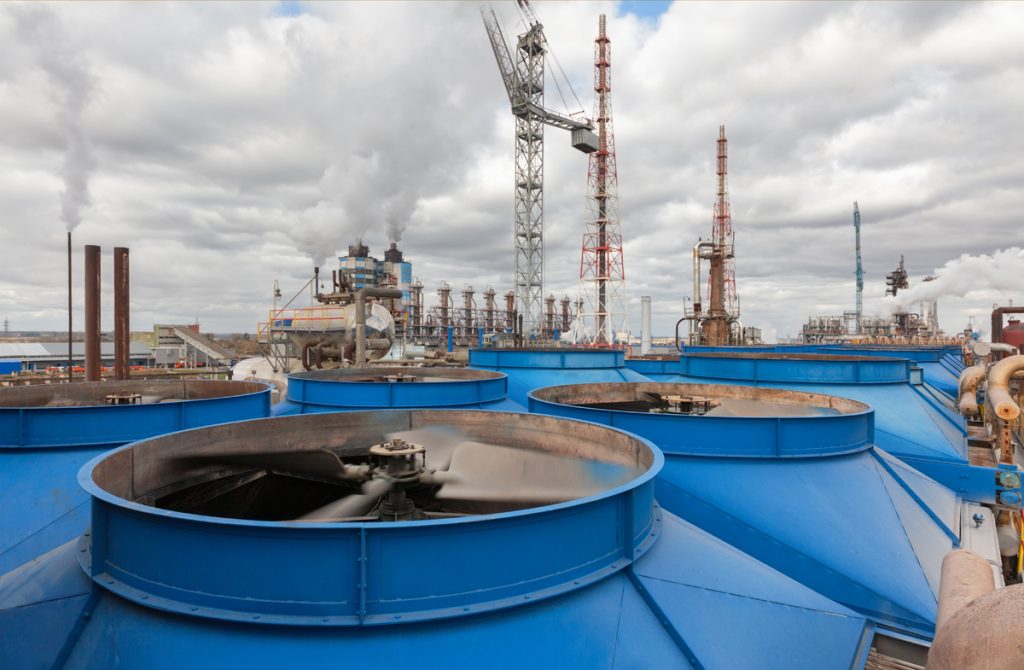Let’s take a brief look at some simple items that require little time or effort to maintain, yet are often over-looked until failure. Unfortunately, when some parts on a cooling tower reach the point of failure they have generally failed prematurely and/or have cost the facility unseen money and resources due to common oversight.
Float Valve Assembly:
Water Level in cooling tower basins have a factory recommended water level that should be maintained in the cold-water basin during operation. You should check with your factory representative or other knowledgeable company to insure the float adjustment is correct. Your float assembly can appear to be working perfect. However, if it is set to low your float valve could be working over-time cycling on/off with too much frequency. If the water level is set to high you could be running precious and expensive water out the over-flow drain. In many cases it’s not just the loss of water, but also additional sewer usage charges could mount-up as well.
1. Confirm the factory water level setting for your cooling tower and set your float level accordingly.
2. Monthly perform an overall inspection of your float assembly. Check the tension on all the hardware such as the nuts and bolts on the armatures/float arms, check the float ball for leaks and obstructions. If you have a “hollow” plastic float ball, I would recommend replacing it with a new “foam-filled” plastic float ball. A crack on a hollow float ball will fill-up with water and sink. A Foam filled float ball will at least keep the ball floating and help prevent a complete failure.
3. Descale the float valve and lubricate (WD-40) the piston and any linkage on the outside of the valve body.
4. Replace the galvanized steel armature that has likely been bent on several occasions to set the water level and replace it with a stainless-steel armature that is rigid and won’t corrode. This will insure a correct adjustment rather than the well-known toilet float rod bend technic.
Distribution Nozzles:
[three-fourths-first]If you could calculate how much performance you are losing with broken, plugged or incorrectly sized nozzles you would be urgently correcting the problem tomorrow. In addition, you should never replace the Fill Packing on your cooling tower without replacing every single nozzle. The Fill Packing is dependent on uniform water flow to provide the calculated heat exchange for your cooling tower. Any void in the water flow over the Fill surface area will short change the investment you just made in that very expensive Fill change-out.
1. Spray Nozzles – Routinely check for plugged nozzles, cracked grommets and correct positioning of every nozzle.
2. Target Nozzles – Target nozzles are located inside the hot water basin / distribution pans for Cross Flow cooling towers. Routinely check the distribution pan to insure all nozzles are clear of any debris and that each nozzle is securely in place, not lifted. Please don’t attempt to clear any debris with a stick or screw driver, it will clean the hole, but in most cases, you knock the distributor fins off the nozzle where you can’t see it. Take the nozzle out, clean it, then reinstall it.
Air Inlet Louver Panels:
[three-fourths-first]Louver Panels are generally used on the exterior lower perimeter of an Induced Draft cooling tower. Over time these cellular PVC panels accumulate calcium scale formation as well as biological growth in some cases. When Louvers plug-up your cooling tower loses efficiency in direct relationship to the obstruction in the cellular flutes. Essentially, the cooling tower fans are the lungs to a cooling tower and the louver panels are similarly the mouth and nose. When the panels become obstructed the tower cannot breath / draw air across the heat exchange surface, literally suffocating the cooling tower.
1. Inspect Louver panels often. Plugged cellular Louvers are costing you money and collateral wear on the mechanical components as well.
2. When you can no longer maintain the existing Louvers “reasonably clean” – change them!
3. When replacing the Louvers, you can purchase re-insert media (1 Piece) to fit into your existing frames or replace the complete unit frame and all.
Note: If re-using the existing frames, it is important to purchase modular (1) piece replacement panels that are bonded together and sized to fit as a unit, rather than loose pieces. Bonded (1) piece units will prevent water splash-out between otherwise loose (non-bonded) sections which would be dry fitted into the frame.
For more information or comments please contact Universal Tower Parts or visit our website www.universaltowerparts.com






